- Home
- T. S. Eliot
The Waste Land Page 2
The Waste Land Read online
Page 2
And as soon as he left, he began to write again.
In early 1914 Eliot was awarded a Sheldon Fellowship in Philosophy,
which meant that he could travel to Merton College, Oxford, for a year. He
planned to spend the summer in Marburg, Germany, honing his German-
language skills, then go on to England. He arrived in Germany in July,
but the outbreak of World War I meant that, as a foreign national, he had
to leave the country. He went to London, planning then to go on to Oxford.
By chance his old friend from Harvard, Conrad Aiken, was residing in
London. Still interested in Eliot’s early poems, Aiken had recently shown
“Prufrock” and “La figlia che piange” to Harold Monro, proprietor of the
Poetry Bookshop in London and editor of Poetry and Drama, then the prin-
cipal journal for new poetry in England. Monro had dismissed them as
“absolutely insane.”18 Undaunted, Aiken urged Eliot to visit someone else
whom he had met over the summer, the American poet Ezra Pound. “You
i n t r o d u c t i o n
7
go to Pound. Show him your poems,” Aiken reportedly said.19 On 22 Sep-
tember, Eliot called on Pound and introduced himself. His life, though
he did not know it, was about to be transformed.
At Pound’s request, Eliot promptly sent him a selection of poems. By
the end of the month Pound already had promised Eliot that he would
get “Prufrock” published in Poetry, the Chicago magazine started in 1912
by Harriet Monroe, already the most prominent journal for new poetry
in English. “He wants me to bring out a Vol. after the War,” Eliot enthused
to Aiken in late September 1914, adding ruefully: “The devil of it is that
I have done nothing good since J. A[lfred] P[rufrock]. and writhe in im-
potence” ( LOTSE, 58). Pound immediately grasped Eliot’s importance,
and he was soon laboring to get all his early poems into print. More im-
portant, his encouragement had rekindled Eliot’s ambitions; once again
he entertained the idea of becoming a poet, not a philosopher. “Then in
1914 . . . my meeting with Ezra Pound changed my life. He was enthusiastic
about my poems, and gave me such praise and encouragement as I had
long since ceased to hope for. Pound urged me to stay . . . and encouraged
me to write verse again” ( LOTSE, xvii).
Eliot moved to Merton College, Oxford, for the autumn term of 1914,
but he was soon bored and returned to London in January 1915. He returned
again to Oxford for the spring term, where he encountered his old friend
Scofield Thayer. Sometime in the first week of March, Thayer introduced
Eliot to Vivien Haigh-Wood, an intelligent, attractive young woman who
dressed well and liked to dance. She was nervous and high-strung, and
often su¤ered from headaches, cramps, and an irregular and overfrequent
menstrual cycle. Eliot, who had confessed that he was still a virgin in De-
cember 1914, later recalled that he was simply “too shy and unpractised”
to engage in a “flirtation or mild a¤air” ( LOTSE, xvii). Instead, the two
married. Their wedding, which transpired without their having informed
their parents, took place on 26 June 1915. One contemporary observer,
Aldous Huxley, thought their relationship was a matter of sexual attraction:
“I met Mrs. E. for the first time and perceived that it is almost entirely a
sexual nexus between Eliot and her: one sees it in the way he looks at her
—she’s an incarnate provocation.”20 Eliot, in old age, gave a rueful assess-
ment. “I came to persuade myself that I was in love with her simply because
I wanted to burn my boats and commit myself to staying in England. And
she persuaded herself (also under the influence of Pound) that she would
8
i n t r o d u c t i o n
save the poet by keeping him in England.” He concluded grimly: “To her
the marriage brought no happiness . . . to me, it brought the state of mind
out of which came The Waste Land” ( LOTSE, xvii).
Meanwhile, Eliot was beginning to acquire a reputation, as Ezra Pound
hectored and cajoled editors into publishing his poems. In June 1915 Har-
riet Monroe published “Prufrock” in Poetry. In July, Wyndham Lewis pub-
lished four “Preludes” and “Rhapsody on a Windy Night” in the second
issue of Blast. In September “Portrait of a Lady” was published by Alfred
Kreymborg in the brief-lived New York review Others. Pound, meanwhile,
had already sent Harriet Monroe another three poems which Eliot had
composed earlier in the year while at Oxford, and in October “The Boston
Evening Transcript,” “Aunt Helen,” and “Cousin Nancy” appeared in Poetry.
In November, Pound brought out a collection of contemporary verse in
which he reprinted four poems by Eliot (“Prufrock,” “Portrait of a Lady,”
“Aunt Helen,” and “The Boston Evening Transcript”) and included one new
work, “Hysteria.” It was the first appearance of Eliot’s poetry in book form.
Now married, Eliot set out to reorganize his life. In late July he returned
to the United States, but he stayed for only three weeks. His parents wanted
him to finish his graduate studies, and he evidently agreed to complete
his thesis. When he returned to England in August, he found that Vivien
was ill and, as he had already anticipated, that they were desperately short
of money. Bertrand Russell stepped in to help, o¤ering them the use of
a bedroom in his flat till they could a¤ord their own. Eliot began to teach
at a grammar school in High Wycombe, a small town some forty miles
outside London, which obliged him to rent a room there and return to
London for long weekends. The pay was £140 a year and a daily meal.
Russell had provided introductions to editors, and Eliot started to take up
book reviewing in earnest, hoping to supplement his teaching salary; in
the course of 1916 he published twenty-one reviews, chiefly on philosophi-
cal books. Russell proved still more generous, giving Eliot £3,000 in engi-
neering debentures; the income from these averaged £150 per year. At
last, by Christmas 1915 the Eliots moved out of Russell’s flat. They spent
three months at the home of Vivien’s parents in Hampstead, and finally,
in March 1916, got a flat of their own at 18, Crawford Mansions. It was
small and cramped, and Eliot complained about it repeatedly in the years
ahead. Beginning in January 1916, he took a teaching position at Highgate
Junior School; it was much closer to central London and paid £20 a year
i n t r o d u c t i o n
9
more. Eliot kept the position for the rest of the year. But these temporary
solutions to the problems of housing and domestic finances could not
disguise the toll they were taking on his writing: in 1916 he published
only four poems; two dating back to his time at Harvard (“Conversation
Gallante” [1909] and “La figlia che piange” [1911]), and one to the brief inter-
lude when he had been writing at Oxford in early 1915, just before he met
Vivien (“Morning at the Window”). Only one, “Mr. Apollinax,” was a con-
temporary composition.
At the end
of 1916 Eliot resigned from his teaching position. For a
few months he tried to survive as a freelance writer, but it proved impos-
sible. In March 1917 he began to work for Lloyds Bank, where he would
spend the next eight years of his life. Lloyds was already a huge corporation,
the second largest of the “Big Six” British clearing banks which had emerged
after decades of intensive merger and acquisition activity.21 The acquisition
process was just drawing to an end during Eliot’s years at the bank, as
Lloyds absorbed four banks during the period 1918–1923. The result was
an immensely powerful concentration of capital, and the bank was now
seeking to expand into the international arena. (In 1911 Lloyds had pur-
chased Armstrong & Co., with branches in Paris and Le Havre, and in
1917 it joined forces with National Provincial Bank to create the Lloyds
and National Provincial Foreign Bank, a new firm that by 1938 had twelve
branches on the Continent, serving British nationals and companies in
Europe.) Indirectly, it was this expansion which led to Eliot’s employment.
For it was a friend of Vivien’s family, L. E. Thomas, then the chief general
manager of National Provincial Bank, who gave Eliot a letter of introduction
to Lloyds Bank, and accordingly Eliot was duly assigned to the Colonial
and Foreign Department. Its oªces were at 17 Cornhill Street (see Fig.
8), in the heart of the City, one of several abutting buildings owned by
Lloyds which faced Cornhill and Lombard Streets. (In 1926, just after
Eliot’s departure, Lloyds tore down the older buildings and erected the
head oªce it still occupies today.)
The British banks concentrated in the City were the heart of global
capital, and Eliot’s experience of their operations is perceptible throughout
The Waste Land, which repeatedly conflates financial and sexual economies
into an amorphous world of uncontrolled circulations. If The Waste Land
is situated anywhere, it is in the City: King William Street (see Fig. 5),
Moorgate, London Bridge (see Fig. 4), St. Mary Woolnoth (a church situated
1 0
i n t r o d u c t i o n
just opposite the Lombard Street facade of Lloyds Bank; see Figs. 6, 7),
St. Magnus Martyr (another church, this one adjacent to London Bridge;
see Figs. 12–14), Lower Thames Street (see Figs. 12–13), the Cannon Street
Hotel (see Fig. 10), Queen Victoria Street—all are City locations evoked
in the poem. Every day, from 9:30 to 5:30, working one Saturday in four,
Eliot labored in his oªce, a tiny cog in the great machine of capital.
Eliot was one of 7,400 employees engaged by Lloyds Bank. During
the First World War women clerks had first appeared at Lloyds. By late
1918 they totaled 3,300, nearly 45 percent of the bank’s total labor force.
With demobilization they were soon being dismissed, and after 1920 they
were engaged only for typing or filing. By 1925 there were 1,500 left, all
of them single (until 1949, women had to resign when they married). The
Waste Land was unprecedented in placing an anonymous typist within
the domain of serious poetry, as it does in part III; until then such subjects
had been treated only in light or humorous verse.22
Eliot worked in the Colonial and Foreign Department for three years;
in 1919 he was transferred to the Information Department, and in 1923
he returned to the Colonial and Foreign Department. There he tracked
current movements in exchange rates against the background of economic
and political developments. At the Information Department, as he told
his mother, his work kept him busy:
In the first place my work on German Debts has been very
heavy. Next week I shall have an assistant and a typist to write
my letters and do card indexing, but last week I have had to
struggle through chaos myself, receiving hundreds of reports
from Branches of the bank, classifying them, picking out the
points that needed immediate attention, interviewing other
banks and Government Departments, and trying to elucidate
knotty points in that appalling document the Peace Treaty.
( LOTSE, 369)
Eliot’s salary nearly doubled from the moment he entered Lloyds. In
1917 he was earning £270 per year; by late 1918 his income had increased
to £350 ( LOTSE, 259), and by 1922 to £455. Part of this increase was merely a function of the postwar inflation, but part indicated real esteem for his
services. Employees at the bank recalled him as a stylish dresser. One remi-
niscence, probably apocryphal, records that “he would often in the middle
i n t r o d u c t i o n
1 1
of dictating a letter, break o¤ suddenly, grasp a sheet of paper, and start
writing quickly when an idea came to him.”23
The City in which Eliot worked di¤ered sharply from the area as we
know it today. Many of its thoroughfares had quite recently been remodeled
to conform to the grand manner of Edwardian commercial developments.
Jerry White has neatly described this style, “eclectic in its borrowings from
classical architecture, and from Wren and the French Baroque, as grandi-
ose as the London County Council’s height restrictions would permit, with
a buttoned-up pomposity of bearing which the odd flutter of decorative
fancy did little to relieve, making oªces look like rich men’s mansions
and calling them, with false modesty, ‘Houses.’”24 Between 1900 and 1914
many areas in the northern part of the City were largely rebuilt in this
“Grand Manner,” including Finsbury Square, Finsbury Pavement, Finsbury
Circus, Moorgate (mentioned in The Waste Land), and London Wall. King
William Street (also mentioned in The Waste Land) was remodeled around
1912 to accommodate new oªces for insurance companies, while Grace-
church Street was remodeled to house banks. One e¤ect of all this activity
was to drive out residents; between 1901 and 1911 a quarter of the City’s
population was lost. “The City,” one contemporary commented, “becomes
more and more a collection of oªce buildings.”25 The sense of inhuman
desolation which su¤uses The Waste Land, its depiction of the City as
haunted terrain in which “a spectre stops the passerby in full daylight”
(note to line 60), owes much to this perceptible dwindling of living inhabi-
tants, their homes consumed by a voraciously expanding commercial life.
Although the City was an extreme case, it epitomized a process taking
place throughout the whole of inner London. In the Edwardian period all
but two of the twenty-eight metropolitan boroughs showed a net decline
in population, as residents increasingly moved to new suburbs. The little
warren of small shops and warehouses that clung to Lower Thames Street,
at the foot of London Bridge (see Figs. 12, 13), was virtually a prehistoric
relic by the time that Eliot wrote the plangent verses which commemorate
them in The Waste Land (see lines 259–263).
Not that a loss of residents meant a decline in crowds in the City. Quite
the contrary. Between 1891 and 1911 the number of employees in the City
increased from 301,000 to 364,000, while “visitors” to the C
ity meant
that over a million people per day entered and left the square mile. What
enabled the movement of such large numbers of people was a revolution
1 2
i n t r o d u c t i o n
in urban transportation which took place between 1900 and 1914. Electri-
fication of the railways, especially the Tube or underground system, was
rapid. Inaugurated in June 1900, it was already complete by 1906. In 1903
the London County Council, which held a monopoly of tramways in inner
London, began its electrification program for trams, and by 1914 electric
trams were seen on most main roads throughout north, south, and east
London. The era of the London motor bus got under way at about the same
time, in 1907, when the London General Omnibus Company (LGOC) intro-
duced its first electric trams. In 1911 the last horse-drawn service for the
LGOC was closed. By that date, too, the motor taxi had also more or less
completely displaced the horse-drawn hansom cab. Hansoms still existed,
but increasingly they were rarities to be pointed out and gawked at. In The
Waste Land “the sound of horns and motors” is omnipresent, while “the
human engine waits / Like a taxi throbbing waiting,” and “trams and dusty
trees” cast inert gloom.
The year 1917 marked not only Eliot’s entry into Lloyds, but also his
first book publication. Prufrock and Other Observations was issued in June
by the Egoist Press, the book publishing wing of the Egoist, a journal which combined feminist and individualist strains of thought. The press run was
only five hundred copies, and reviews were not numerous. One reviewer
dismissed Eliot as “one of those clever young men who find it amusing
to pull the leg of a sober reviewer. . . . The subjects of the poems, the im-
agery, the rhythms have the wilful outlandishness of the young revolution-
ary idea.”26 But May Sinclair (1870–1946), an established English novelist,
urged that “Prufrock” and “Portrait of a Lady” were “masterpieces.” “Eliot’s
genius,” she wrote, was “disturbing”: “It is elusive; it is diªcult; it demands
a distinct e¤ort of attention.” Yet she concluded that “if there is anything
more astounding and more assured than his performance it is his prom-
ise.”27 Edgar Jepson (1863–1938), an American novelist who resided in

 Old Possum's Book of Practical Cats
Old Possum's Book of Practical Cats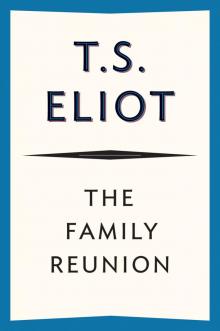 The Family Reunion
The Family Reunion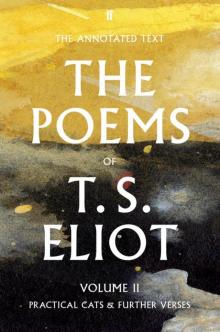 T. S. Eliot the Poems, Volume 2
T. S. Eliot the Poems, Volume 2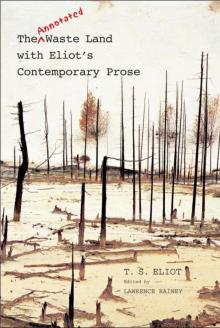 The Waste Land
The Waste Land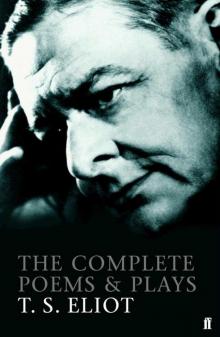 The Complete Poems and Plays, 1909-1950
The Complete Poems and Plays, 1909-1950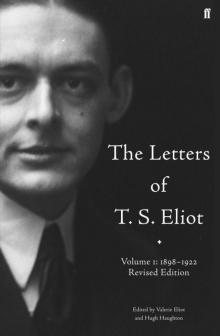 Letters of T.S. Eliot: 1898-1922
Letters of T.S. Eliot: 1898-1922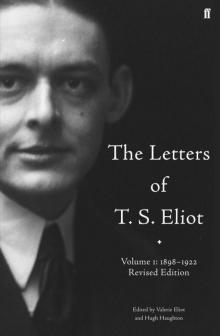 The Letters of T. S. Eliot, Volume 1: 1898-1922
The Letters of T. S. Eliot, Volume 1: 1898-1922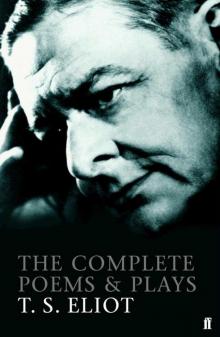 Complete Poems and Plays
Complete Poems and Plays